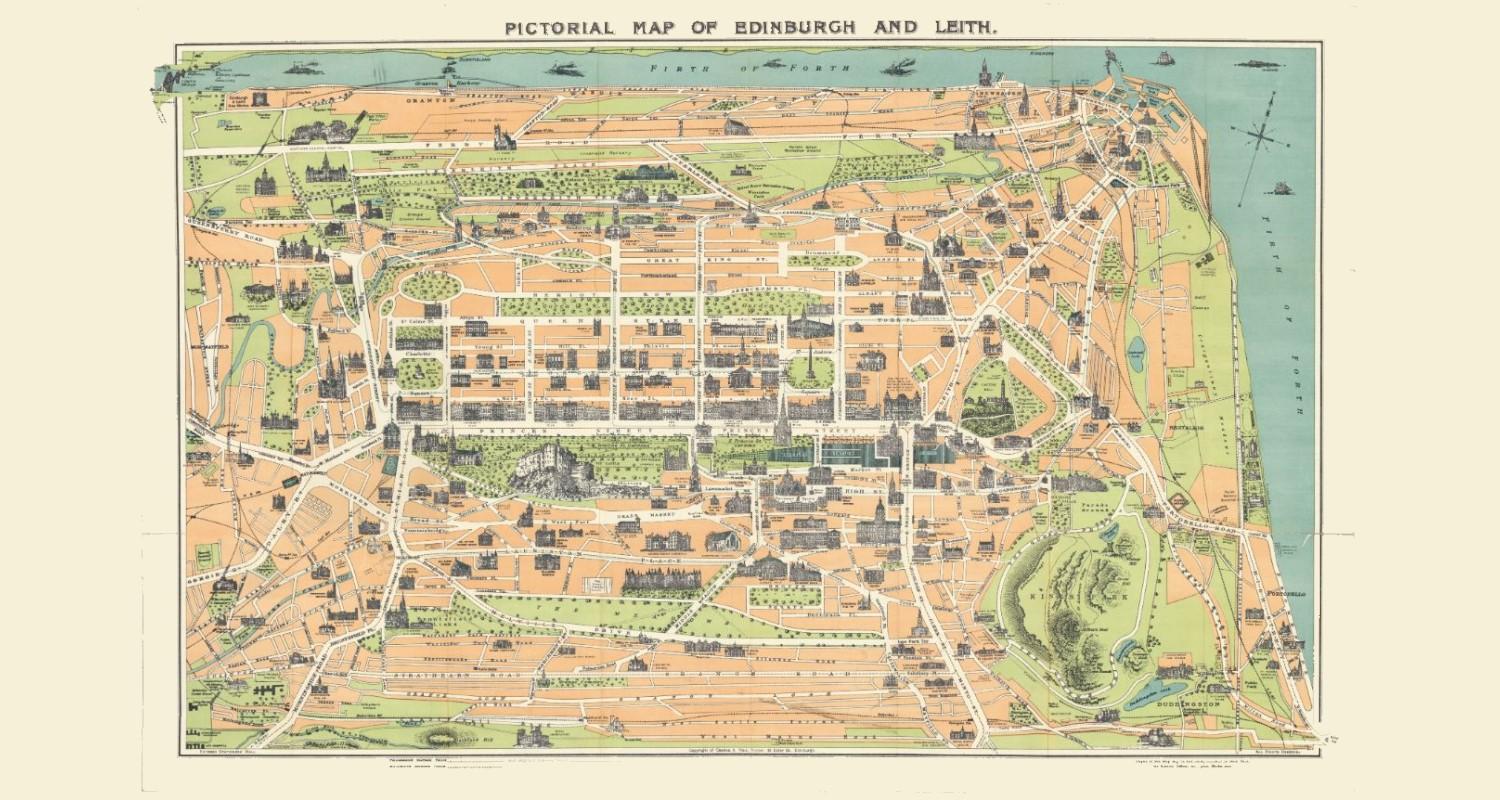This fully illustrated talk will examine the history of the city through 20 selected maps of Edinburgh, dating from the 1530s through to the present day. At one level, these maps show a rapidly changing and expanding city over time, with maps growing in detail and content. At another level, the different selection of content in these maps, their changing purposes, their omissions and their changing audiences reveal much more about life within Edinburgh. The talk will also look at the changing way these maps were made, and by whom, charting the rise and fall of Edinburgh as a centre of map publication.
Chris Fleet is Map Curator at the National Library of Scotland, where he has worked since 1994. His primary responsibilities have been with digital maps and the Library’s maps website. He has also researched and spoken on the Library’s map collections, and is a co-author of Edinburgh: Mapping the City (2014).
The National Library of Scotland will be celebrating its own anniversary in 2025 with special programming in Edinburgh and further afield to mark its Centenary year.
This lecture is now fully booked. If you would like to be added ot the waiting list, please email bookings.museumsandgalleries@edinburgh.gov.uk, or call the City Art Centre reception desk at 0131 529 3993.
Edinburgh is 900 Years Old!
In 1124 King David I introduced a new system of local government into Scotland by creating royal burghs as part of his efforts to reform the nation’s economic and political structures.
Edinburgh was one of his first royal burghs, along with Berwick, Dunfermline, Roxburgh and Stirling.
While there is no surviving founding Edinburgh charter, an 1127 Dunfermline Abbey royal charter refers to ‘my burgh of Edinburgh’. In 1128, Canongate Burgh was created for Holyrood Abbey.
After the Reformation, Edinburgh spent considerable effort acquiring the former abbey’s lands over the following 200 years. It acquired Canongate then created a new burgh for South Leith in 1636. The burghs of Broughton, Calton and Portsburgh were also acquired and run by Edinburgh. This complex system of governance was abolished in 1856 when all burghs under the management of Edinburgh were merged into a single burgh.
In 1833, Portobello and Leith were made independent parliamentary burghs under the Burgh Reform Act. They ran their own affairs until amalgamated into an expanded Edinburgh in 1896 and 1920, respectively. 1975 saw the last expansion of the city’s boundaries, including Queensferry, which had been made a royal burgh in 1636.
Edinburgh has selected 2024 to mark the start of the 900th anniversary of our city, and to tell the story of Edinburgh’s journey through the centuries from the 12th century City of David right up to the 21st century, the City of Diversity. Our talks at the City Art Centre will celebrate the 10 themes and will span a period of summer 2024 until August 2025.

Edinburgh: A history in twenty maps
